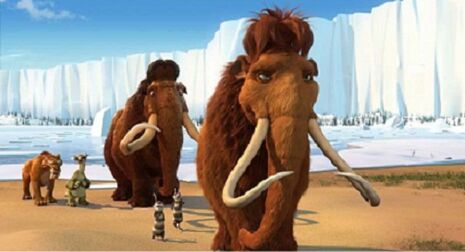Cambridge Zoologists Solve Great Mystery of Woolly Mammoth Extinctions
Scientists from the Cambridge Department of Zoology believe they have discovered the cause of the extinction of the Woolly Mammoths
Scientists from the Cambridge Department of Zoology may have discovered the answer to why the giant animals (i.e. Megafauna) that once roamed the earth, such as the Woolly Mammoths, Mastodons and Giants Sloths, went extinct thousands of years ago.

The large scale, rapid nature of this this massive series of extinctions has lured the interest of scientists since Darwinian times. Yet explanations for this biological mystery are still highly contested.
Many scientists blame the arrival of humans for the disappearances. Other investigators contend that changing climate was the key driver of these widespread extinctions. It turns out that both sides may be right.
In the most comprehensive study of megafaunal extinction to date, Zoology faculty have found that extinction was not the result human arrival or climate change alone, but rather that the co-occurrence of these two processes produced this devastating disappearance of large animals.
University Senior Lecturer and co-author on the paper reporting this study, Andrea Manica, emphasizes the expansive scope of their analysis: “While previous work focused on relatively narrow geographic regions, this paper assembles information for the whole world and quantitatively assesses the relative role of climate and anthropogenic arrivals in predicting extinctions” he expresses.
In fact, the investigators performed an exhaustive assessment of over 180 genera of megafauna in five different landmasses over the past 700,000 years.
Though this study analyses past events, the results have present day implications. Climate change and human expansion continue to threaten many wildlife species. This study emphasizes the need for holistic measures for wildlife conservation that consider multiple potential threats.
The results of this study are reported in the paper "Quantitative global analysis of the role of climate and people in explaining late Quaternary megafaunal extinction", published today by the Proceedings of the National Academy of Sciences.
 News / Uni registers controversial new women’s society28 November 2025
News / Uni registers controversial new women’s society28 November 2025 News / 15 arrested in pro-Palestine protest 29 November 2025
News / 15 arrested in pro-Palestine protest 29 November 2025 Comment / Cambridge is woke – that’s no bad thing 28 November 2025
Comment / Cambridge is woke – that’s no bad thing 28 November 2025 News / Cambridge cosies up to Reform UK30 November 2025
News / Cambridge cosies up to Reform UK30 November 2025 Comment / Surely it’s time to scrap scholars’ dinners?28 November 2025
Comment / Surely it’s time to scrap scholars’ dinners?28 November 2025








